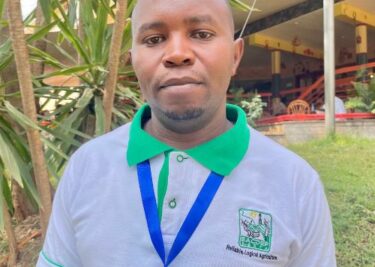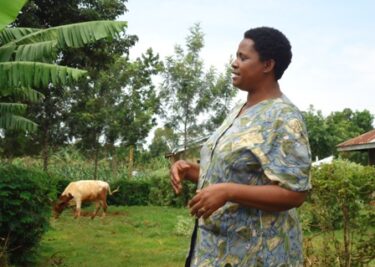Stella Muthiria: Harvesting Fruits From The Tree of Life
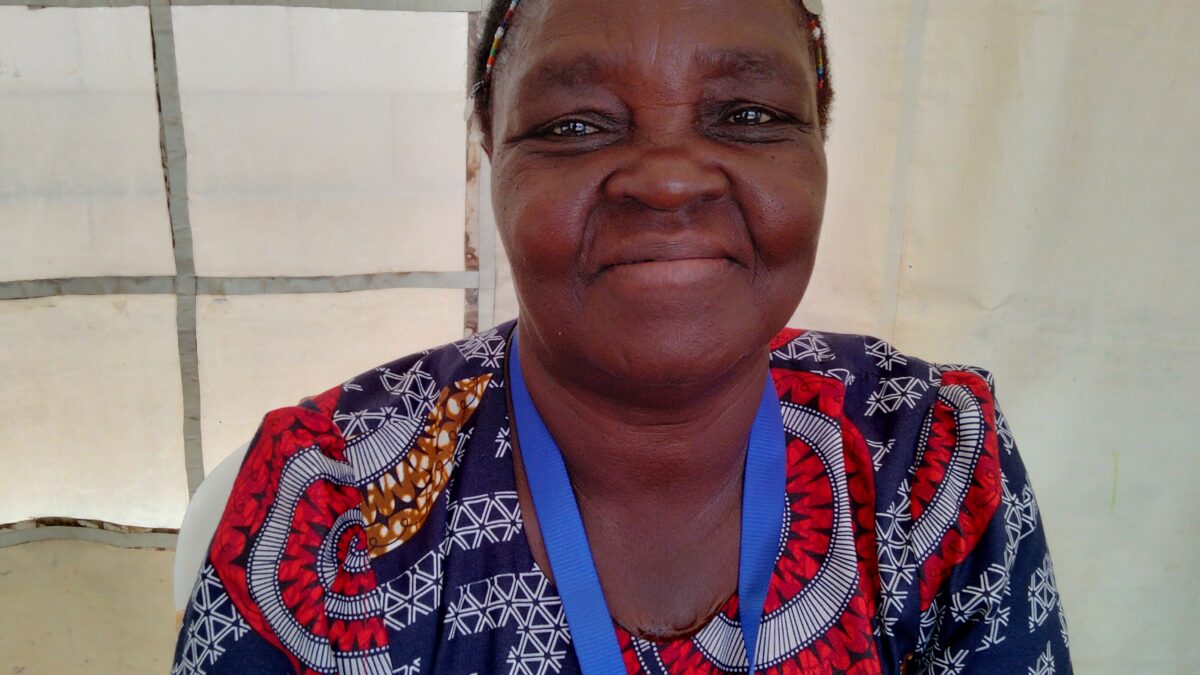
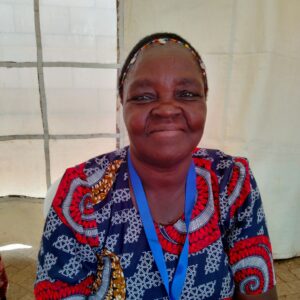
“The best time to plant a tree was 20 years ago. The second best time to plant it is today.”
This African proverb has been etched into Stella Gerald Muthiria’s memory since infancy. It was an encouragement from her parents to keep the Earth green for future generations. It was also a reminder of just how long it can take for a baobab tree to mature and begin bearing fruit.
Rooted in Culture
Growing up in the picturesque countryside of Tharaka Nithi greatly appealed to Stella’s adventurous spirit. Every day after school, she helped with house chores by grazing goats or weeding sorghum. Interacting with flora and fauna on her family’s shamba brought Stella limitless joy. But nothing compared to the thrill of scaling one of the baobab trees that grew uncultivated on the farm. Stella spent countless hours nestled among its branches and working away at the pods that encased the tree’s savoury fruits.
Beyond providing a tasty treat, the baobab is a sacred tree that symbolizes wisdom, longevity, and life itself. In the Tharaka community, it is a great blessing to have a baobab tree on one’s land. Given its 2000-year lifespan, it is an honour to nurture the tree during one’s lifetime and pass the mantle on to the next generation for years, decades, centuries, and millennia to come. Stella watched countless times as traditional rituals were conducted beneath the shade of the baobab tree in her family homestead. These core memories from her childhood influenced her choice to venture into farming in 1974 and nurture the baobab tree in her own matrimonial home.
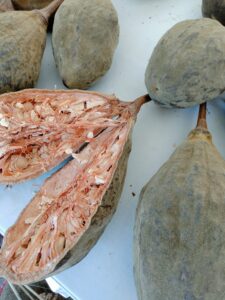
Challenges of Baobab Propagation
Despite focusing on growing other subsistence crops over the years, Stella has made good on her decision to keep her baobab tree healthy. Fortunately for her, the baobab is one of the hardiest trees on earth. It has the capability to withstand the harshest climatic conditions. Her only role in the species’ survival is to harvest its fruits and propagate its seeds to give life to new trees.
As low maintenance as it seems, propagating baobab trees is not a simple task. This is a lesson Stella learned the hard way. After countless failed efforts to grow the trees in her home nursery, Stella resorted to tossing the seeds in the wild and watering them until they germinated. Even though their survival in an undomesticated setting proved to be far higher, this did not stop Stella from trying to crack the code of their cultivation.
In return for her hard work, Stella’s baobab tree rewards her with approximately 65 pods annually as of November 2022. Once dry, she harvests the fruits and sells them in their unadulterated form to manufacturers. These are then processed into baobab oil, powder, and the quintessential pink mabuyu that we love to snack on. Stella also harvests the bark of the tree and sun dries it to get a high-quality fibre. She weaves this fibre into baskets, or ciondo as they are known in Tharaka.
From the singular baobab tree that grows in her backyard, Stella has been able to provide a living for her family. This tree has remained resilient even during prolonged droughts that have starved the rest of her crops. Her role as a guardian of the baobab remains rooted in the wise words drummed into her in childhood to think beyond the present and plant trees for future use.
#WakulimaWetu


